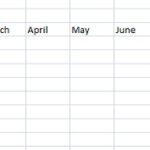Using ByVal in VBA
ByVal is more than just a keyword in VBA. It’s a powerful tool that can help you write clean, efficient, and bug-free code. We’ll explain what ByVal means, why it’s important, and how to use it correctly.
What is ByVal in VBA
ByVal is a keyword in VBA used to specify how arguments are passed to procedures and functions. It stands for “by value”, and its primary purpose is to determine whether the original variable’s value is affected when it’s used as an argument in a procedure or function.
ByVal vs. ByRef
In VBA, there are two ways to pass arguments: ByVal and ByRef.
ByVal: When an argument is passed ByVal, a copy of the variable’s value is sent to the procedure or function. Changes made to the argument within the procedure or function do not affect the original variable.
ByRef: When an argument is passed ByRef (which is the default if you don’t specify ByVal or ByRef), the procedure or function receives a reference to the original variable. Any changes made to the argument within the procedure or function directly impact the original variable.
How to Use ByVal
Using ByVal in VBA is straightforward. When declaring a procedure or function, specify ByVal before the argument name:
Sub MyProcedure(ByVal arg As Integer)
' My awesome Code
End Sub
By specifying ByVal in the procedure declaration, you create a safeguard ensuring that any modifications made to arg within MyProcedure are restricted to its local copy. Consequently, the original variable passed into the function remains unchanged, preserving its value outside the procedure.
To illustrate the concept of ByVal, let’s consider a simple VBA function that squares a number without altering the original value:
Function Square(ByVal num As Double) As Double
Square = num * num
End Function
In this example, the ByVal keyword ensures that the original num variable remains unaffected, allowing you to calculate the square of a number without side effects.



